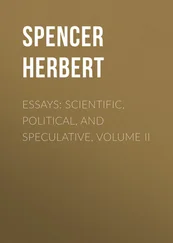But these conclusions may be successfully contested. Receiving them though we have been, for years past, as established truths, a critical examination of the facts has convinced us that they are quite unwarrantable. They involve so many manifest incongruities, that we have been astonished to find men of science entertaining them, even as probable. Let us consider these incongruities.
In the first place, mark what is inferable from the distribution of nebulæ.
"The spaces which precede or which follow simple nebulæ," says Arago, "and a fortiori, groups of nebulæ, contain generally few stars. Herschel found this rule to be invariable. Thus every time that during a short interval no star approached in virtue of the diurnal motion, to place itself in the field of his motionless telescope, he was accustomed to say to the secretary who assisted him—'Prepare to write; nebulæ are about to arrive.'"
How does this fact consist with the hypothesis that nebulæ are remote galaxies? If there were but one nebula, it would be a curious coincidence were this one nebula so placed in the distant regions of space, as to agree in direction with a starless spot in our own sidereal system. If there were but two nebulæ, and both were so placed, the coincidence would be excessively strange. What, then, shall we say on finding that there are thousands of nebulæ so placed? Shall we believe that in thousands of cases these far-removed galaxies happen to agree in their visible positions with the thin places in our own galaxy? Such a belief is impossible.
Still more manifest does the impossibility of it become when we consider the general distribution of nebulæ. Besides again showing itself in the fact that "the poorest regions in stars are near the richest in nebulæ," the law above specified applies to the heavens as a whole. In that zone of celestial space where stars are excessively abundant, nebulæ are rare; while in the two opposite celestial spaces that are furthest removed from this zone, nebulæ are abundant. Scarcely any nebulæ lie near the galactic circle (or plane of the Milky Way); and the great mass of them lie round the galactic poles. Can this also be mere coincidence? When to the fact that the general mass of nebulæ are antithetical in position to the general mass of stars, we add the fact that local regions of nebulæ are regions where stars are scarce, and the further fact that single nebulæ are habitually found in comparatively starless spots; does not the proof of a physical connexion become overwhelming? Should it not require an infinity of evidence to show that nebulæ are not parts of our sidereal system? Let us see whether any such infinity of evidence is assignable. Let us see whether there is even a single alleged proof which will bear examination.
"As seen through colossal telescopes," says Humboldt, "the contemplation of these nebulous masses leads us into regions from whence a ray of light, according to an assumption not wholly improbable, requires millions of years to reach our earth—to distances for whose measurement the dimensions (the distance of Sirius, or the calculated distances of the binary stars in Cygnus and the Centaur) of our nearest stratum of fixed stars scarcely suffice."
In this confused sentence there is implied a belief, that the distances of the nebulæ from our galaxy of stars as much transcend the distances of our stars from one another, as these interstellar distances transcend the dimensions of our planetary system. Just as the diameter of the Earth's orbit, is a mere point when compared with the distance of our Sun from Sirius; so is the distance of our Sun from Sirius, a mere point when compared with the distance of our galaxy from those far-removed galaxies constituting nebulæ. Observe the consequences of this assumption.
If one of these supposed galaxies is so remote that its distance dwarfs our interstellar spaces into points, and therefore makes the dimensions of our whole sidereal system relatively insignificant; does it not inevitably follow that the telescopic power required to resolve this remote galaxy into stars, must be incomparably greater than the telescopic power required to resolve the whole of our own galaxy into stars? Is it not certain that an instrument which can just exhibit with clearness the most distant stars of our own cluster, must be utterly unable to separate one of these remote clusters into stars? What, then, are we to think when we find that the same instrument which decomposes hosts of nebulæ into stars, fails to resolve completely our own Milky Way? Take a homely comparison. Suppose a man who was surrounded by a swarm of bees, extending, as they sometimes do, so high in the air as to render some of the individual bees almost invisible, were to declare that a certain spot on the horizon was a swarm of bees; and that he knew it because he could see the bees as separate specks. Incredible as the assertion would be, it would not exceed in incredibility this which we are criticising. Reduce the dimensions to figures, and the absurdity becomes still more palpable. In round numbers, the distance of Sirius from the Earth is half a million times the distance of the Earth from the Sun; and, according to the hypothesis, the distance of a nebula is something like half a million times the distance of Sirius. Now, our own "starry island, or nebula," as Humboldt calls it, "forms a lens-shaped, flattened, and everywhere detached stratum, whose major axis is estimated at seven or eight hundred, and its minor axis at a hundred and fifty times the distance of Sirius from the Earth." [11]And since it is concluded that the Solar System is near the centre of this aggregation, it follows that our distance from the remotest parts of it is some four hundred distances of Sirius. But the stars forming these remotest parts are not individually visible, even through telescopes of the highest power. How, then, can such telescopes make individually visible the stars of a nebula which is half a million times the distance of Sirius? The implication is, that a star rendered invisible by distance becomes visible if taken twelve hundred times further off! Shall we accept this implication? or shall we not rather conclude that the nebulæ are not remote galaxies? Shall we not infer that, be their nature what it may, they must be at least as near to us as the extremities of our own sidereal system?
Throughout the above argument, it is tacitly assumed that differences of apparent magnitude among the stars, result mainly from differences of distance. On this assumption the current doctrines respecting the nebulæ are founded; and this assumption is, for the nonce, admitted in each of the foregoing criticisms. From the time, however, when it was first made by Sir W. Herschel, this assumption has been purely gratuitous; and it now proves to be inadmissible. But, awkwardly enough, its truth and its untruth are alike fatal to the conclusions of those who argue after the manner of Humboldt. Note the alternatives.
On the one hand, what follows from the untruth of the assumption? If apparent largeness of stars is not due to comparative nearness, and their successively smaller sizes to their greater and greater degrees of remoteness, what becomes of the inferences respecting the dimensions of our sidereal system and the distances of nebulæ? If, as has lately been shown, the almost invisible star 61 Cygni has a greater parallax than [Greek: a] Cygni, though, according to an estimate based on Sir W. Herschel's assumption, it should be about twelve times more distant—if, as it turns out, there exist telescopic stars which are nearer to us than Sirius; of what worth is the conclusion that the nebulæ are very remote, because their component luminous masses are made visible only by high telescopic powers? Clearly, if the most brilliant star in the heavens and a star that cannot be seen by the naked eye, prove to be equidistant, relative distances cannot be in the least inferred from relative visibilities. And if so, nebulæ may be comparatively near, though the starlets of which they are made up appear extremely minute.
Читать дальше












